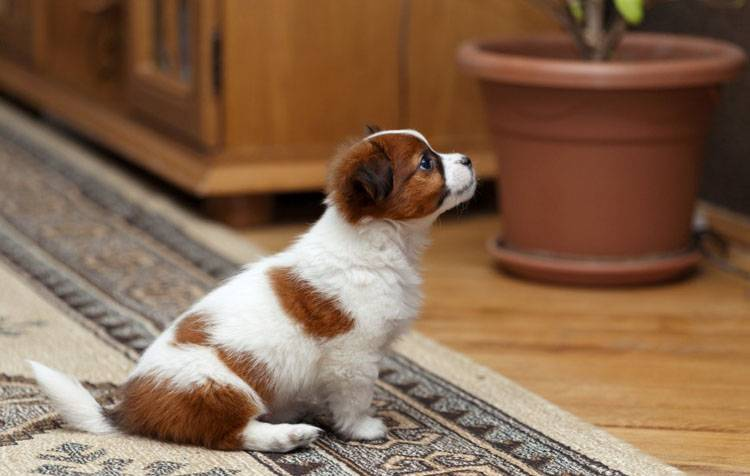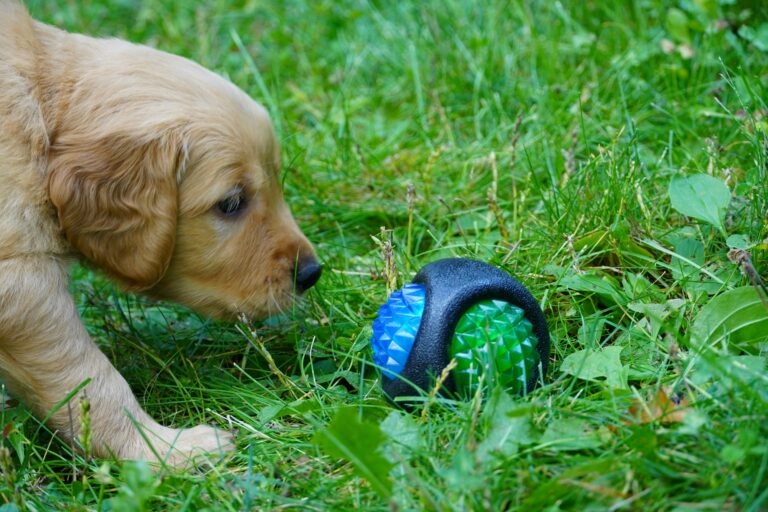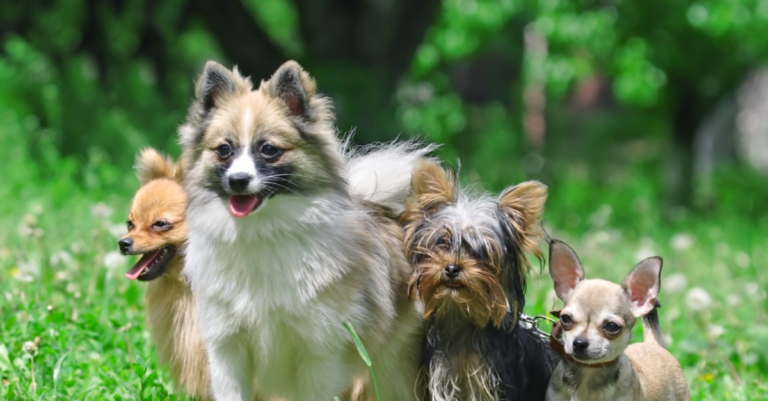In the enchanting world of pet companionship, small dogs often hold a special place in our hearts. But as adorable and affectionate as they can be, these tiny canines sometimes present their own unique training challenges. Today’s discussion will dive into an essential aspect of dog training: recall training for small dogs, a topic of significant interest for all small dog owners.
The essence of recall training lies in teaching your petite pooch to come back to you when called. This may sound straightforward, yet, it can prove to be a daunting task for many. The upcoming paragraphs aim to shed light on mastering this art, sprinkled with expert tips and tricks, sure to make the process a breeze for both the pet and its human.
The importance of recall training for small dogs extends beyond mere obedience. It’s about ensuring their safety and well-being, particularly in outdoor environments. Therefore, we will explore not just the ‘how’, but also the ‘why’ of recall training, reinforcing its significance for small dog breeds.

The discussion will also delve into the potential roadblocks that one may face during recall training. Dealing with distractions, overcoming stubbornness, and encouraging consistency are some of the key topics that will be touched upon. After all, understanding the problems is half the battle won.
Lastly, we will wrap up with a selection of recall training exercises, meticulously designed for small dogs. From beginner to advanced levels, these exercises promise to make recall training a fun and rewarding experience. In essence, this conversation is not just about mastering recall training, but about strengthening the bond between you and your pint-sized pup. 🐾🐕
Building a Strong Foundation for Recall Training
Before advancing to complex environments, it is essential to build a strong foundation for recall. Small dogs can be easily overwhelmed by new stimuli, so beginning the training in a familiar and quiet environment is key.
Choosing the Right Rewards for Recall Training
Finding the right motivators is critical for successful recall training. Every dog is unique, and small breed dogs can have particular preferences.
Establishing Positive Associations with Recall
One of the biggest mistakes owners make during recall training is inadvertently creating negative associations.
Gradual Introduction of Distractions
Once your dog reliably responds in a quiet environment, it’s time to introduce mild distractions.
Using a Long Line for Safety and Control
Training outdoors requires extra precautions to keep your small dog safe. A long training leash is an excellent tool during this stage.
Incorporating Recall into Daily Activities
Making recall training part of your daily routine speeds up learning and reinforces the behavior naturally.
Handling Setbacks with Patience
Setbacks are inevitable in any dog training journey, especially with small dogs who may have bursts of independence or stubbornness.
Avoiding Common Recall Training Mistakes
Several common mistakes can undermine recall training efforts. It’s important to avoid negative associations or mixed signals.
Advanced Recall Challenges for Continued Growth
Once your dog demonstrates reliable recall with moderate distractions, introduce more advanced challenges to sustain progress.
Turning Recall into a Life-Saving Skill
Reliable recall is more than just a convenience; it can be a life-saving skill in emergencies.
Celebrating Milestones in Recall Training
Every improvement in your dog’s recall abilities deserves celebration and enthusiastic reinforcement.
Understanding the Small Dog Mindset
Small breed dogs often have big personalities packed into tiny bodies. Tailoring your approach to their temperament is key.
Importance of Body Language and Tone
Dogs are experts at reading body language and tone of voice. How you move and speak matters greatly.
Integrating Play into Recall Training
Small dogs love to play, and integrating fun into recall exercises keeps the training enjoyable and effective.
Setting Realistic Expectations
It’s important to recognize that no dog is 100% reliable in recall. Progress, not perfection, is the goal.
Continuous Learning and Adaptation
Training is a lifelong process. As your dog’s life changes, so should your reinforcement strategy.
Implementing Recall Training: Step by Step
1. Start in a Controlled Environment
Before you start training your dog in a park or other open space, it’s essential to begin in a controlled environment where there are fewer distractions. This could be your living room or a fenced yard.
2. Choose a Command and Stick with It
Whether it’s “come,” “here,” or “return,” choose a command and use it consistently. Dogs can get confused with too many commands, so it’s best to stick with one.
3. Use Rewards Effectively
Always have a reward ready when your dog responds to your recall command. This could be a treat, a favorite toy, or enthusiastic praise. Make sure the reward is given immediately to reinforce the positive behavior.
Addressing Common Challenges in Recall Training
1. Distractions
Distractions are a major hurdle in recall training. Dogs are naturally curious creatures, and it’s easy for them to get sidetracked by interesting sights, sounds, and smells. Start training in a low-distraction environment, then gradually introduce more distractions as your dog improves.
2. Fear or Anxiety
If your dog associates coming to you with negative outcomes (like being scolded or losing freedom), they may be hesitant to respond to your recall command. Make sure you always maintain a positive tone and never punish your dog for failing to respond.
3. Stubbornness
Some dogs may simply be stubborn and refuse to respond to your command. In this case, it’s important to be patient and persistent. Don’t give in to your dog’s stubbornness, but also don’t force them to come.
Advanced Recall Training Techniques
1. The “Ping Pong” Technique
This technique involves two people standing a distance apart and taking turns calling the dog. This helps the dog associate the recall command with the fun of running back and forth.

2. The “Hide and Seek” Technique
This is a fun and effective way to improve your dog’s recall. One person distracts the dog while the other hides, then calls the dog. This not only trains your dog to respond to the recall command but also teaches them to focus on your whereabouts.
3. The “Long Line” Technique
For dogs who are easily distracted or tend to run off, using a long line can be beneficial. Attach a long line to your dog’s collar and use it to guide them back to you when you call.
Varying Rewards to Maintain Engagement
While consistency is important, variety in rewards can keep your dog excited and engaged in training. Using the same treat repeatedly may cause your dog to lose interest over time. Rotate between different types of rewards such as high-value treats, favorite toys, or a quick game of fetch. Some dogs are also motivated by praise or the opportunity to explore a new area. By varying the rewards, your dog remains attentive and eager to respond to your recall commands.
Timing is Everything
When it comes to recall training, the timing of your response is crucial. The reward or praise must come immediately after your dog responds to the recall command. Even a delay of a few seconds can result in your dog associating the reward with a different behavior. Practicing quick, seamless delivery of reinforcement will solidify the connection between the desired behavior and its consequence.
Environmental Management for Better Results
The environment plays a huge role in recall training. Start in a distraction-free space and gradually increase complexity. A backyard or quiet park early in the morning can be ideal for progressing from indoor training. As your dog becomes more reliable, try recall in mildly distracting environments before moving to places with other dogs, wildlife, or heavy foot traffic. Progressing too quickly can lead to setbacks, so observe your dog closely and adjust as needed.
Consistency Across All Family Members
One common obstacle in training is inconsistency between household members. If one person uses different cues or allows the dog to ignore a recall without consequence, it can undermine the training. Make sure everyone in the household understands the importance of using the same command, rewarding good behavior, and avoiding calling the dog for unpleasant experiences like ending playtime. A united front ensures your dog receives consistent messages.
Avoid Overuse of the Recall Cue
It might be tempting to call your dog repeatedly during a training session, but overusing the cue can reduce its effectiveness. If the dog doesn’t respond, repeating the cue teaches them they don’t need to respond the first time. Instead, make each recall count. If your dog ignores the cue, gently guide them back using a leash or long line, then reward heavily once they comply. This reinforces that coming to you always results in something good.
Use Play as a Motivator
Incorporating play into recall sessions can significantly boost your dog’s enthusiasm. Many small dogs love to chase, tug, or be chased themselves. After your dog returns to you, engage them in a short game. This makes coming back fun and not just the end of their freedom. Using toys as intermittent rewards can enhance their desire to stay connected with you.
Practicing Recall in Real-Life Situations
Once your dog is consistent in training sessions, begin practicing recall in daily scenarios. For example, call them from another room in the house, or ask them to come before putting on their leash for a walk. These real-life rehearsals help reinforce the behavior in different contexts, making your dog more reliable in unpredictable situations.
Understanding the Emotional Component of Recall
Recall isn’t just about behavior—it’s also emotional. Your dog needs to feel safe, happy, and excited about returning to you. Avoid calling your dog only when something unpleasant is about to happen, like bath time or ending play at the park. This creates a negative association with the command. Balance necessary recalls with fun ones, ensuring your dog always associates your call with something positive.
Addressing Regression in Training
Even well-trained dogs can regress occasionally, especially after changes in routine, stressful events, or long breaks from practice. If your dog starts ignoring recall commands, go back to basics. Shorten the distance, reduce distractions, and increase rewards. Training is a lifelong process, and occasional refreshers help maintain the behavior over time.
Encouraging Focus Through Eye Contact
Teaching your dog to make eye contact can strengthen your recall efforts. Eye contact enhances focus and attention, making it easier for your dog to hear and process your command. Use a cue like “look” or “watch me,” and reward your dog for holding your gaze. Practicing this in various settings improves your dog’s ability to tune into you, even when distractions are present.
Creating a Reliable Emergency Recall
In addition to a casual recall cue like “come,” many trainers recommend teaching an emergency recall—a special command reserved only for critical situations. This cue should always be associated with a massive reward, like several high-value treats or a favorite toy. Practice it sparingly and never use it for routine activities. This keeps the cue powerful and dependable when it truly matters.
Celebrating Success and Building Confidence
Celebrate your dog’s success as enthusiastically as you would a child’s. A cheerful tone, clapping, and even dancing can make your dog feel like a superstar. Confidence is key in small dogs, and every successful recall builds their sense of competence and trust in you. Positive emotional experiences during training will ensure your dog sees you as a reliable source of joy and safety.
Tracking Progress and Setting Goals
Keeping a training journal can help track your dog’s progress. Note how often your dog responds the first time, what rewards worked best, and where training took place. This allows you to identify patterns and adjust your approach accordingly. Setting small, achievable goals helps maintain momentum and provides a clear path toward your ultimate objective of a strong, reliable recall.
Combining Recall with Other Obedience Cues
Recall doesn’t exist in isolation. Integrating it with other obedience cues strengthens your dog’s overall behavior. For example, ask for a sit or down after your dog comes to you. This encourages impulse control and keeps your dog mentally engaged. Layering behaviors also improves their ability to focus in complex environments.
Conclusion
In conclusion, mastering recall training for small dogs is not just about ensuring they respond to their name, but it’s also about nurturing a trust-based relationship with your pup. Regardless of their pint-sized stature, small dogs require regular mental and physical stimulation to maintain their overall health. By instilling a robust recall training, you not only ensure their safety in an unsecured environment but also add an enjoyable activity to their daily routine.
Consistency is the key to recall training. Stay patient, use positive reinforcement techniques, and remember that every dog learns at their own pace. The journey might be demanding, but witnessing your small dog respond to your call with a wagging tail is indeed a rewarding experience.
With the right training tools and a compassionate approach, you can turn your small pup into a recall pro. So, let’s not overlook the importance of recall training in shaping the behavior of our small furry friends. After all, a well-trained dog is a happy dog, and a happy dog leads to a happy home.
Remember, recall training is not just a command, it’s a commitment towards ensuring the safety and well-being of your little canine companion.



